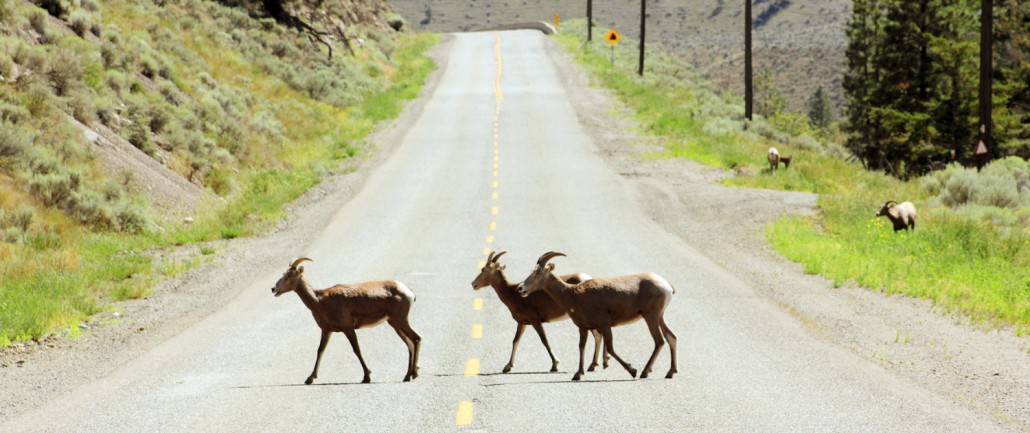
When most people think of dangerous driving conditions, they picture congested highways or fast-paced urban interstates. But for truck drivers, rural roads can be just as, if not more, hazardous. These less-traveled routes often come with their own set of unique risks, especially for commercial drivers hauling heavy loads through isolated terrain.
Whether you’re running local routes, driving OTR, or just taking back roads to avoid traffic, knowing the hazards and how to manage them is key to staying safe on rural roads.
Unique Hazards of Rural Roads
The first step to staying safe on rural roads is understanding what you’re up against. These routes may seem quiet or peaceful, but they come with their own set of unique hazards that every truck driver should be prepared for:
1. Wildlife Crossings
One of the most unpredictable threats on rural roads is wildlife. Deer, elk, raccoons, and even livestock can dart into your path with little warning, especially during dawn and dusk when visibility is low. Collisions with large animals like deer can cause major damage to your truck and create dangerous situations for any vehicles behind you.
2. Unpaved or Poorly Maintained Roads
Unlike highways and interstates, rural routes are often narrow, unpaved, or poorly maintained. Potholes, loose gravel, and eroded shoulders can lead to loss of traction or control, especially in bad weather. Your truck’s suspension and tires take a bigger beating on these roads, so maintenance and caution are both essential.
3. Sharp Curves and Blind Hills
Many rural roads are built around the natural landscape, not through it. That means more sharp turns, blind curves, and sudden hills that can reduce your visibility to just a few feet. These areas are notorious for accidents, especially when taken too fast or in poor conditions like fog, snow, or rain.
4. Slow-Moving Farm Equipment
Tractors, combines, and other agricultural equipment often share rural roads, especially during planting and harvest seasons. These machines move very slowly and can be difficult to see around, made worse on narrow or curving roads. Attempting to pass one without enough visibility can be extremely risky.
5. Limited Lighting and Emergency Services
In rural areas, streetlights and signs can be far less frequent than in cities. If your rig breaks down or you get in an accident, you need to be aware of your surroundings and options. Cell service may be spotty or nonexistent as well, making communication difficult.
Best Practices for Staying Safe on Rural Roads
Once you understand the potential hazards of rural driving, consider these practical tips to help you navigate these roads safely and confidently:
1. Slow Down and Adjust Your Speed
It might be tempting to keep your speed consistent with highway driving, but rural roads require a slower pace. Give yourself time to react to wildlife, tractors, or unexpected curves. The posted speed limit isn’t always safe or intended for trucks, so be sure to adjust for road conditions, visibility, and your load.
2. Watch for Warning Signs (Or the Lack of Them)
Rural areas might not have many warning signs before curves, hills, or animal crossings. Stay alert for subtle clues like tire marks on curves, animal tracks, or freshly tilled soil near a field that might indicate farm activity nearby.
3. Use High Beams Wisely
When driving at night in rural areas, use your high beams whenever possible to improve visibility. Just be sure to dim them when approaching other vehicles or rounding curves to avoid blinding other drivers. As always, remember that high beams are far less effective and potentially dangerous when used during heavy fog.
4. Keep a Fully Stocked Emergency Kit
Because help may be far away, a well-stocked emergency kit can make a huge difference. Consider including items like:
- Flares or reflective triangles
- A flashlight with extra batteries
- First aid supplies
- Bottled water and snacks
- Jumper cables or a jump starter
- A phone charger or backup battery
- Basic tools and a tire repair kit
- In the winter, add blankets, a shovel, and sand or cat litter for traction
5. Maintain Your Vehicle Proactively
Rural roads are rough on rigs. Make sure your tires are in good shape, your brakes are responsive, and your suspension is functioning properly. Check all lights and mirrors before setting out, especially if you expect to drive in low-light conditions.
6. Be Patient Around Farm Equipment
If you find yourself behind a slow-moving tractor or combine, resist the urge to pass unless you have a clear, long view ahead. Even if you’re in a hurry, one unsafe pass can lead to a life-threatening accident. Most farm vehicles will eventually pull off to let you by when it’s safe.
7. Watch the Weather Closely
Rural areas are more susceptible to sudden weather changes, and unpaved roads can quickly become mud traps in the rain or ice hazards in the winter. Monitor weather reports before your route and adjust accordingly.
By slowing down, staying alert, and preparing for the unexpected, you can navigate rural routes safely and efficiently, no matter how remote your destination may be.
Looking for more information on new trends and industry advice? Be sure to check out more posts on our blog and connect with us on social media!


